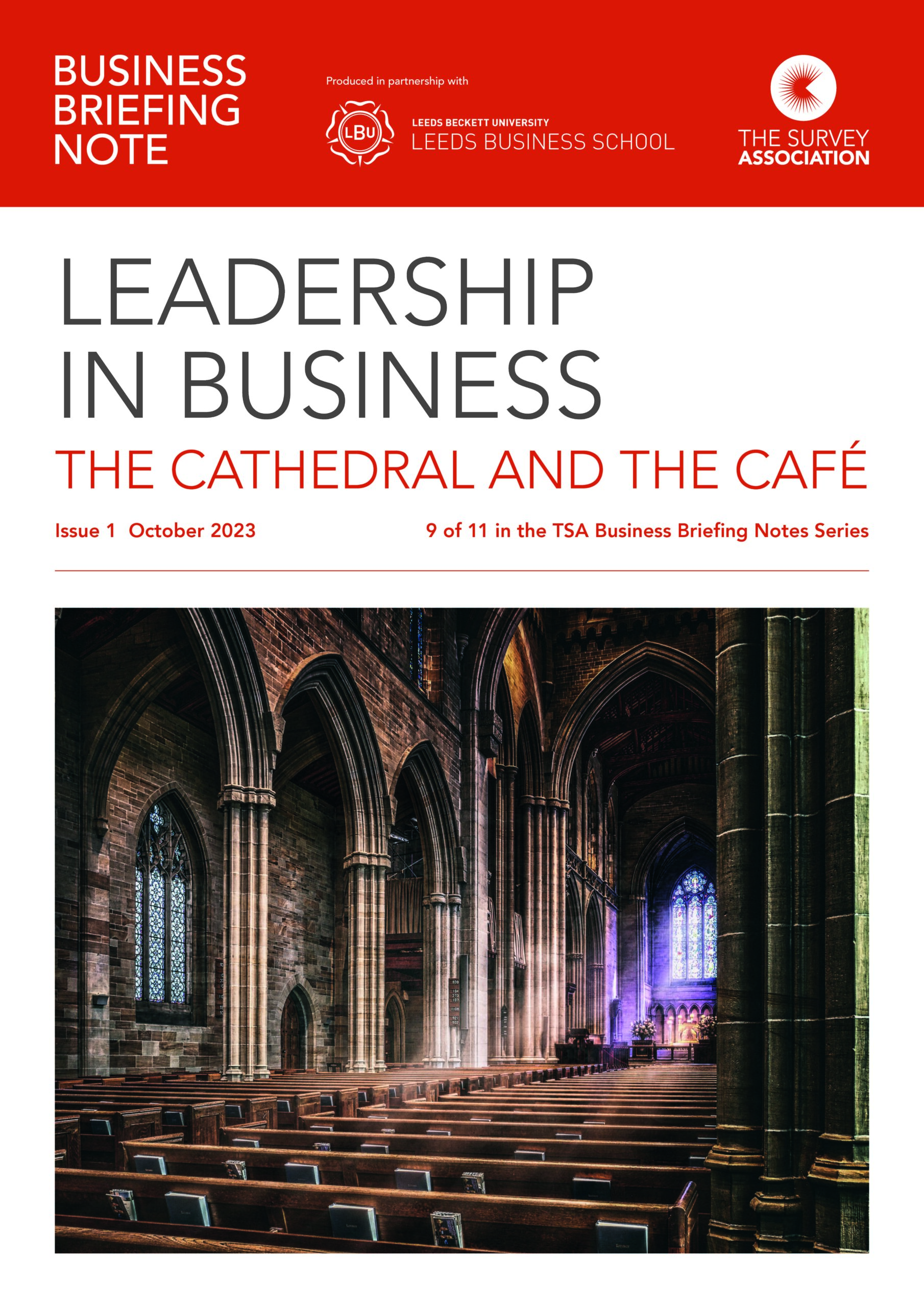Published: 24 Oct 2023
In the latest in our Business Briefing Notes series, author David Taylor, Leadership Programme Developer and Assessor, outlines a number of ways in which leaders can make the most of employees, both in terms of skills but, more importantly, their experience and ideas. He explains that it is often the people closest to the front end of business operations and customer relationships who are actually in the best position to find new solutions to meet your business challenges.
Mr Taylor has been a professional coach for over twenty years. He is widely experienced in leadership and organisational change with businesses of every size, in a wide range of sectors. A Fellow of the RSA, he facilitates Open Space, World Café and Action Learning Events.
Your business as a cathedral…..and a café
Mr Taylor begins his briefing by explaining his analogy of a business both as a cathedral and also as the café attached to it. The cathedral is built to be solid and permanent, impressing onlookers by its presence. The café is a space of movement, of people coming and going, meeting up and chatting in a variety of groups that shift and change.
A business consists of both the cathedral and the café but business leaders often concentrate too much on the cathedral. In other words they focus on strategies, processes, hierarchies, policies and procedures, rather than the people, their energy and ideas.
With as much as 80% of business performance coming from the café, David asks the question, “What might be possible if we could find ways to tap into the power of the café to grow and develop our business?”
Creating a democratic open space for everyone in the business
David elaborates on this theme explaining how to create an open space that is democratic, agenda-free and outside daily routine in order to generate new ideas and strategies to develop the business by answering one open-ended focus question. This approach is effective due to its loose structure and the combined wisdom and varied experience of the participants.
Practical strategies for success
Drawing on key business models, three of the simplest practical strategies to experiment with are Open Space meetings, Peer Learning Groups and Coaching. The briefing delves into what these mean, how they work, how they differ from each other and how to implement them successfully.
The first step is to assess how much time you and other leaders are spending on the cathedral and to determine how this is impacting on your business performance. Next, identify the best strategy for you out of those outlined for creating the necessary open space to engage people in collaborative conversations. You can start small and build up as you go.
The advice ends with a warning that if you allow the cathedral to be the defining dynamic, it will be like “driving a car with your foot on the brake pedal.”
With examples of links to further resources to help you, the full Leadership Business Briefing Note is now available to download from our website. One of our vision statements is to help members build a better business and to that end, you can find all the Business Briefings available so far to download here.

